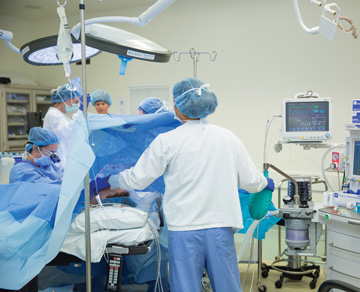At their core, anesthesia machines are basically all the same: They administer inhalational agents to induce sedation or general anesthesia while maintaining the patient’s respiratory state. Newer models, however, can vary significantly in terms of form, function and enticing add-ons. So how do you determine what your facility needs in a new unit? For surgery center administrators, the purchasing process boils down to a familiar value-based equation: acquiring necessary clinical and safety features within budget constraints.
“More isn’t always better, especially in the outpatient setting where an anesthesia machine needs to do what it’s supposed to do and be something you don’t have to worry about,” says Thomas Durick, MD, an assistant professor of anesthesiology at The Ohio State University Wexner Medical Center in Columbus.
When it comes to selecting the right anesthesia machine, Dr. Durick suggests going directly to your best source of information, your anesthesia team, and asking:
- What features do they need, like or find useful?
- What ventilation modes do they use most often, or feel are necessary?
- Would a basic machine serve their purposes, or do they need certain premium features?
- Do they need medical-grade air in addition to oxygen and nitrous oxide for current or future cases?
- Do they need jet ventilation capability for some airway cases?
Of course, answers to those questions will vary from facility to facility. You also need to factor in these key considerations before making a purchasing decision.
• Procedural mix. “In ambulatory centers, we do a lot of smaller, quicker cases with monitored anesthesia care,” says Steven Gayer, MD, MBA, FASA, chief of anesthesia at Bascom Palmer Eye Institute of Miami, Palm Beach and Naples, Fla., professor of anesthesiology at University of Miami Miller School of Medicine and emeritus chair of the American Society of Anesthesiologists’ (ASA) Committee on Ambulatory Surgical Care. In those shorter cases, he says, the provider isn’t using the ventilator portion of the machine, just simply providing auxiliary oxygen to the patient through a nasal canula.
On the other hand, if you’re performing intensive orthopedic procedures, Dr. Gayer says a full-featured machine similar to those found in hospital ORs is required. “You’d want to have everything you’re capable of doing in a hospital setting in terms of ventilating the patient and the ability to view the standard ASA monitors one needs to employ when administering an anesthetic,” he says. Then, there’s outpatient bariatric surgery and pediatric cases. These patients can be difficult to ventilate, so anesthesia providers in those specialties might require machines that are more advanced in managing airway pressures and volumes, says Dr. Durick.
.svg?sfvrsn=be606e78_3)


.svg?sfvrsn=56b2f850_5)